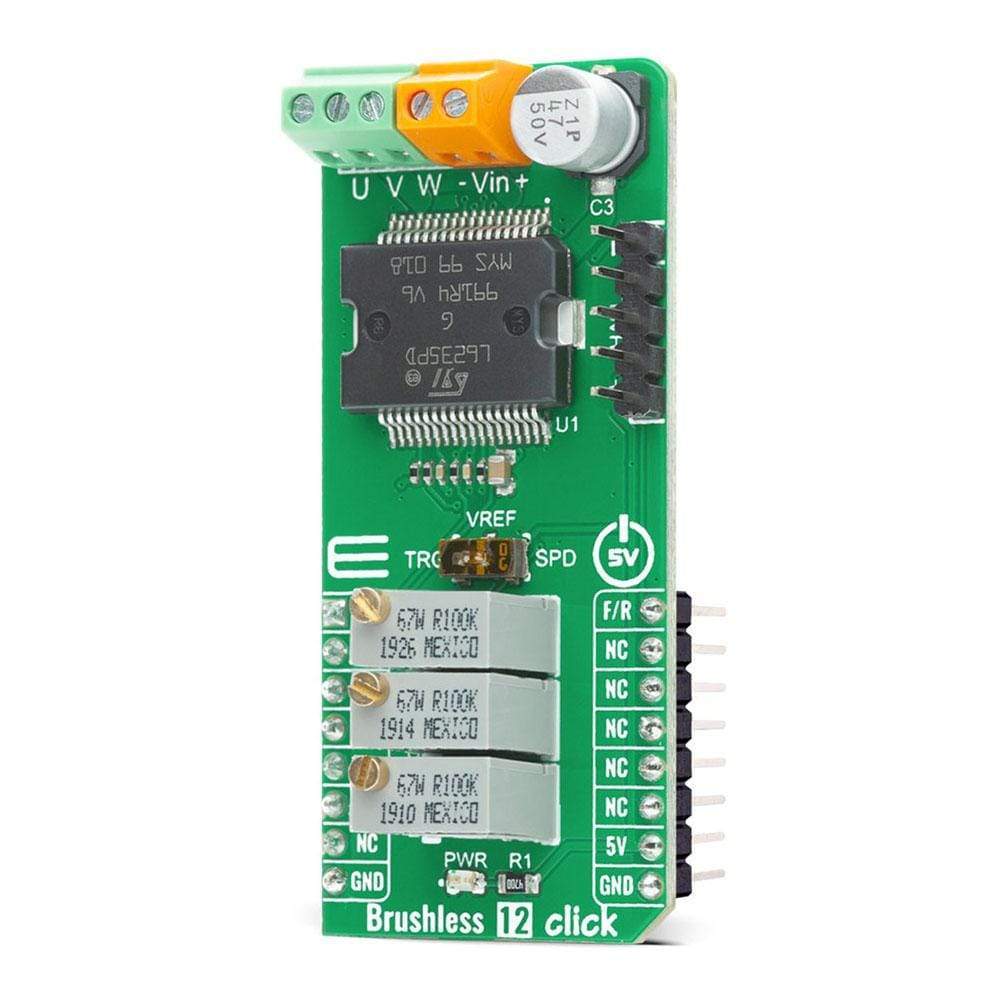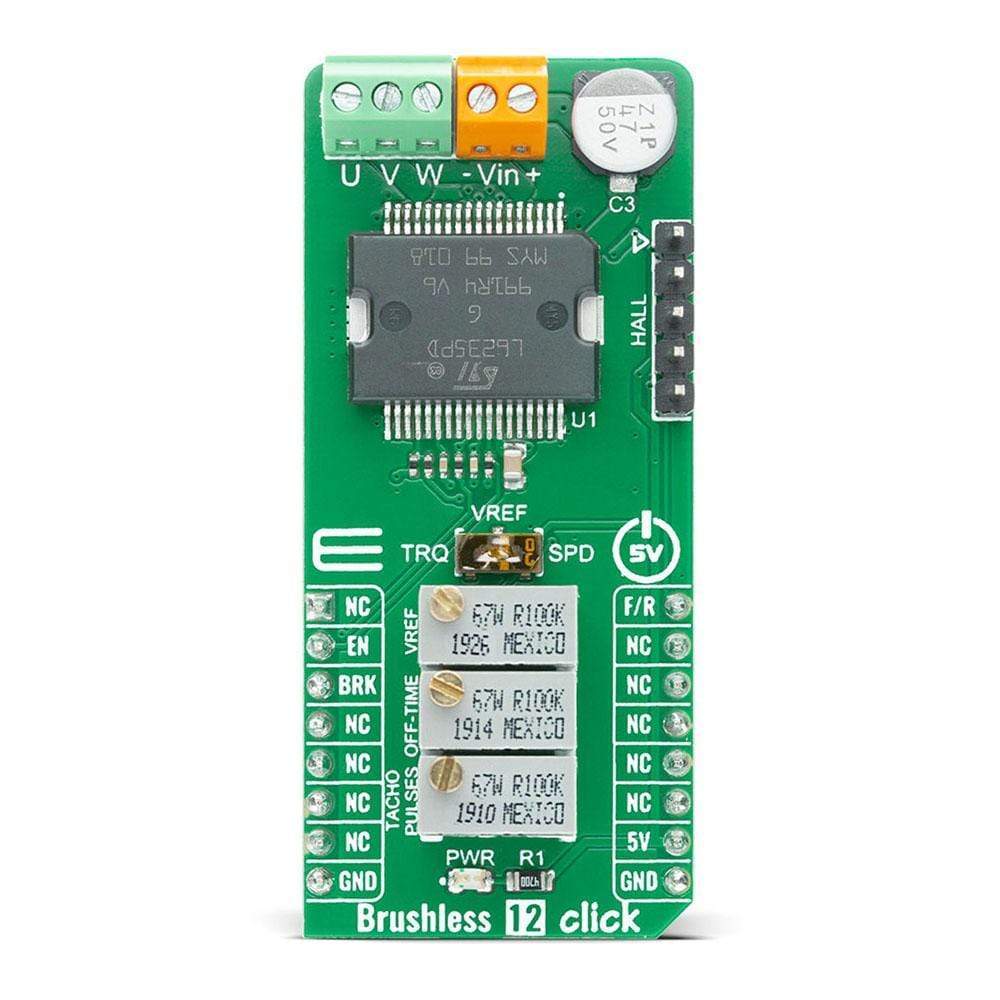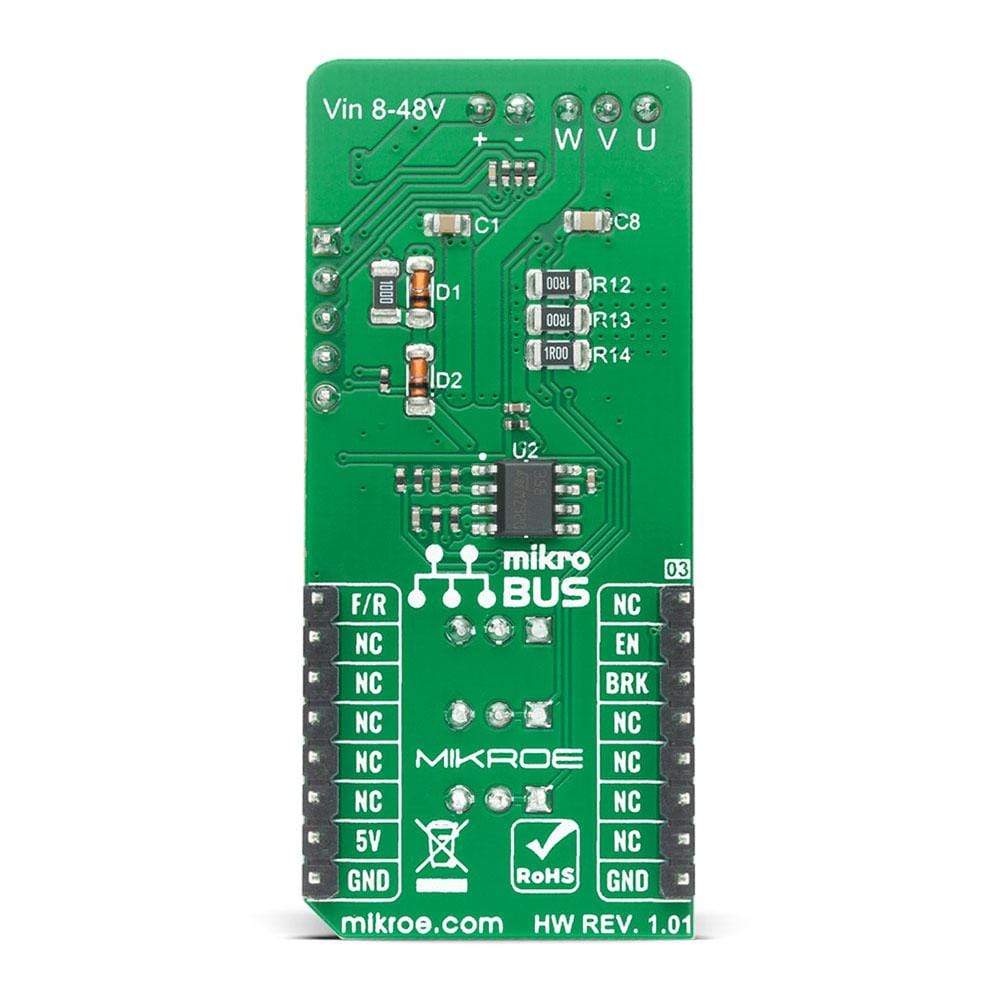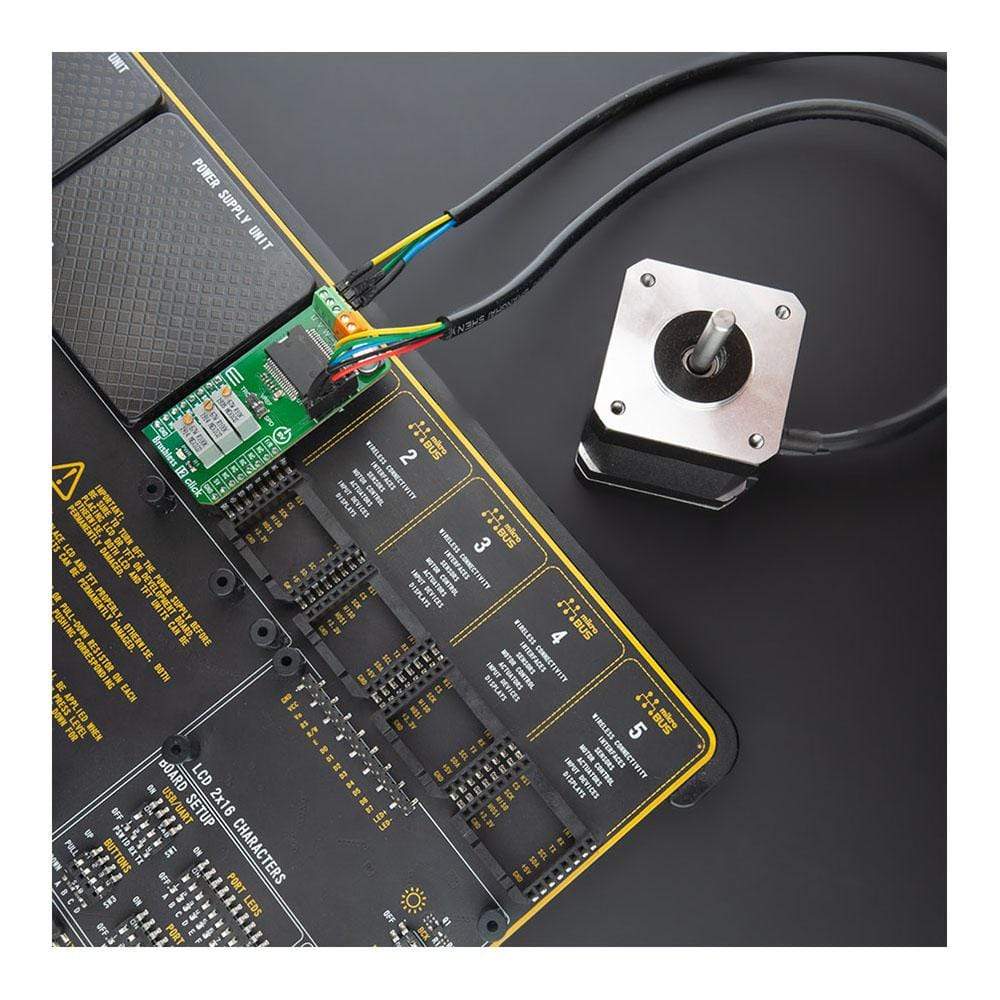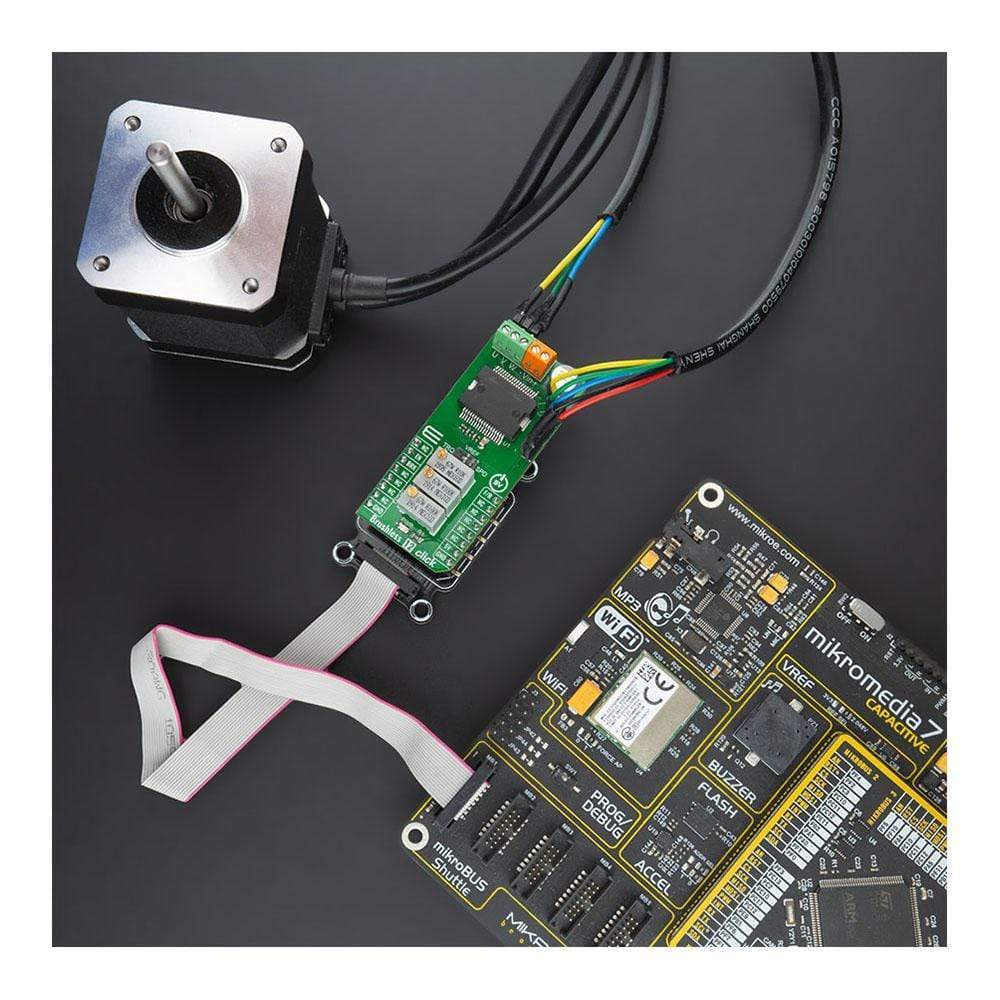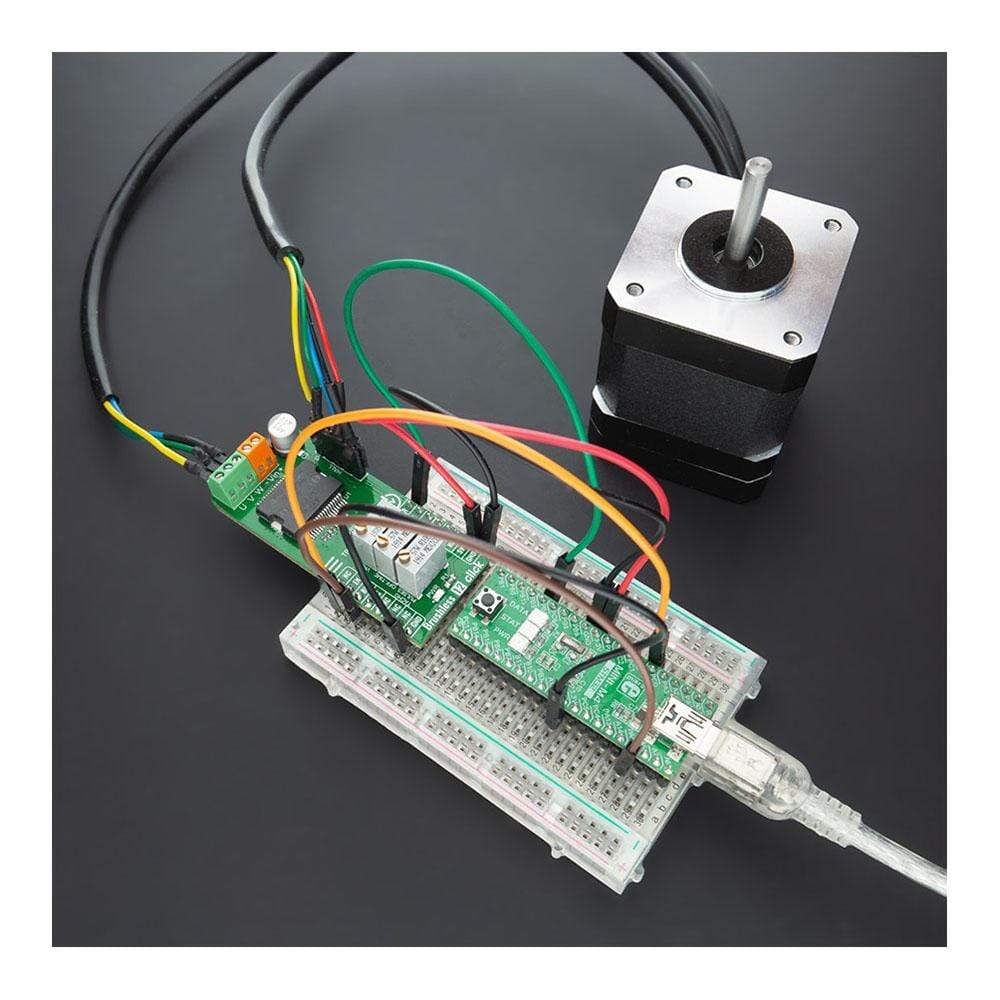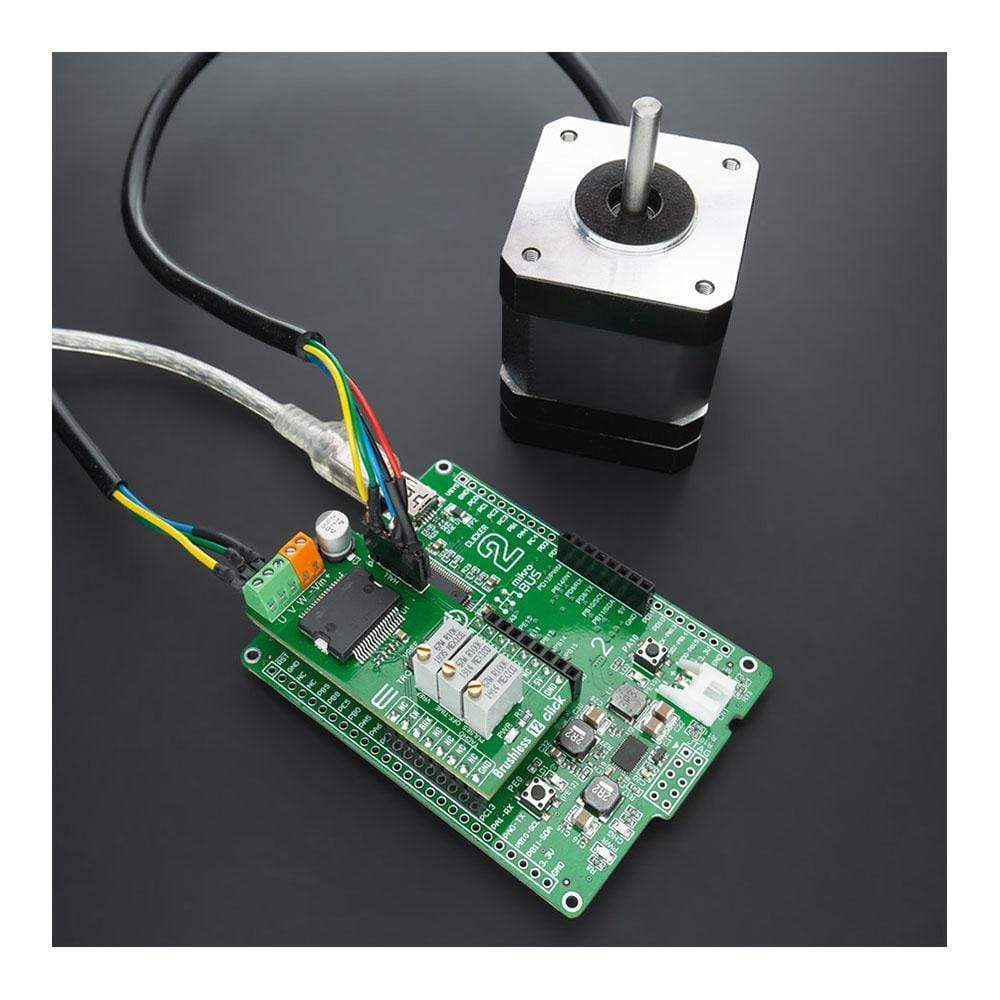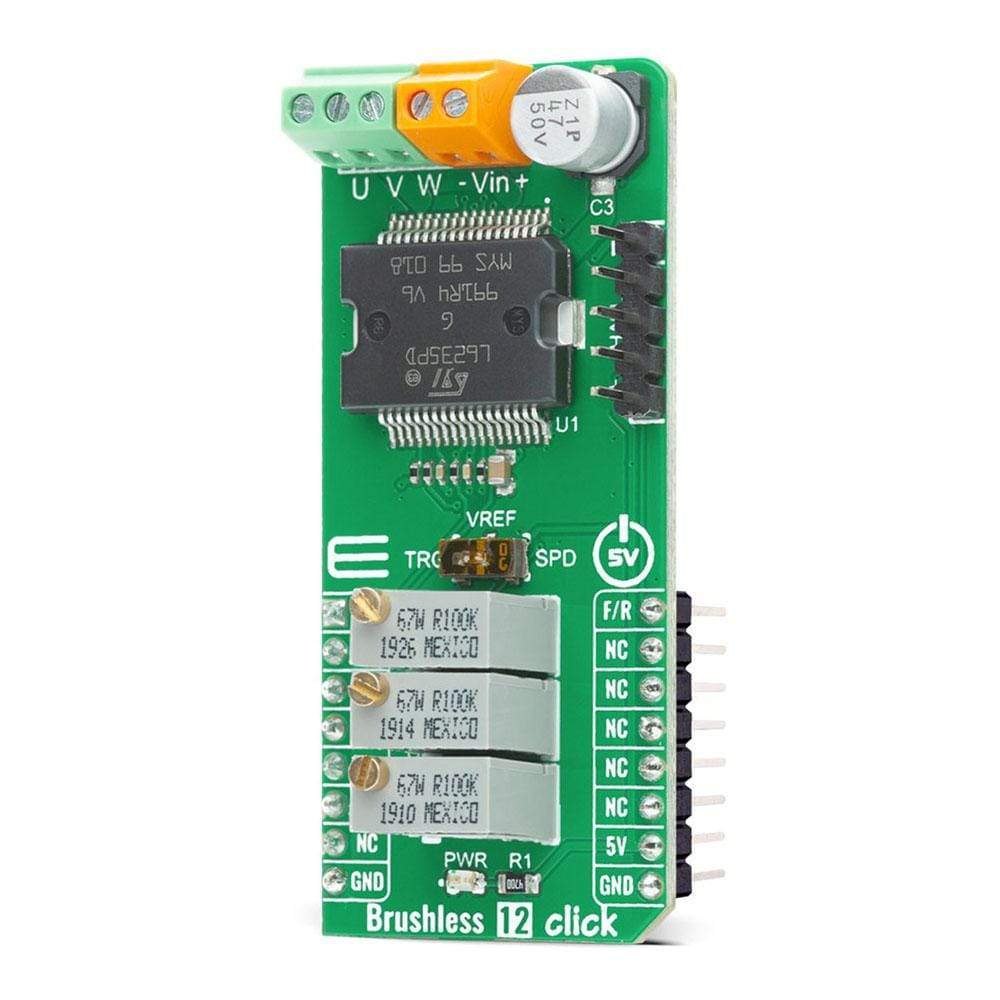
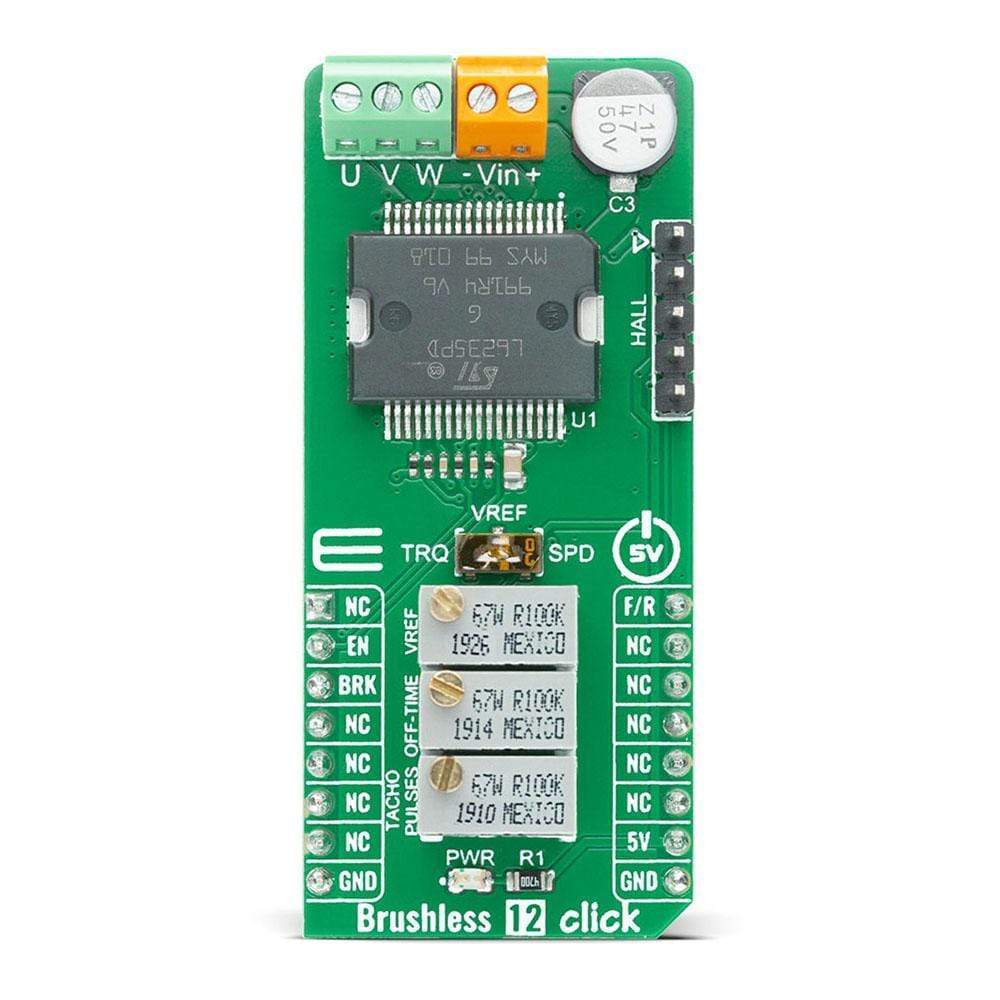
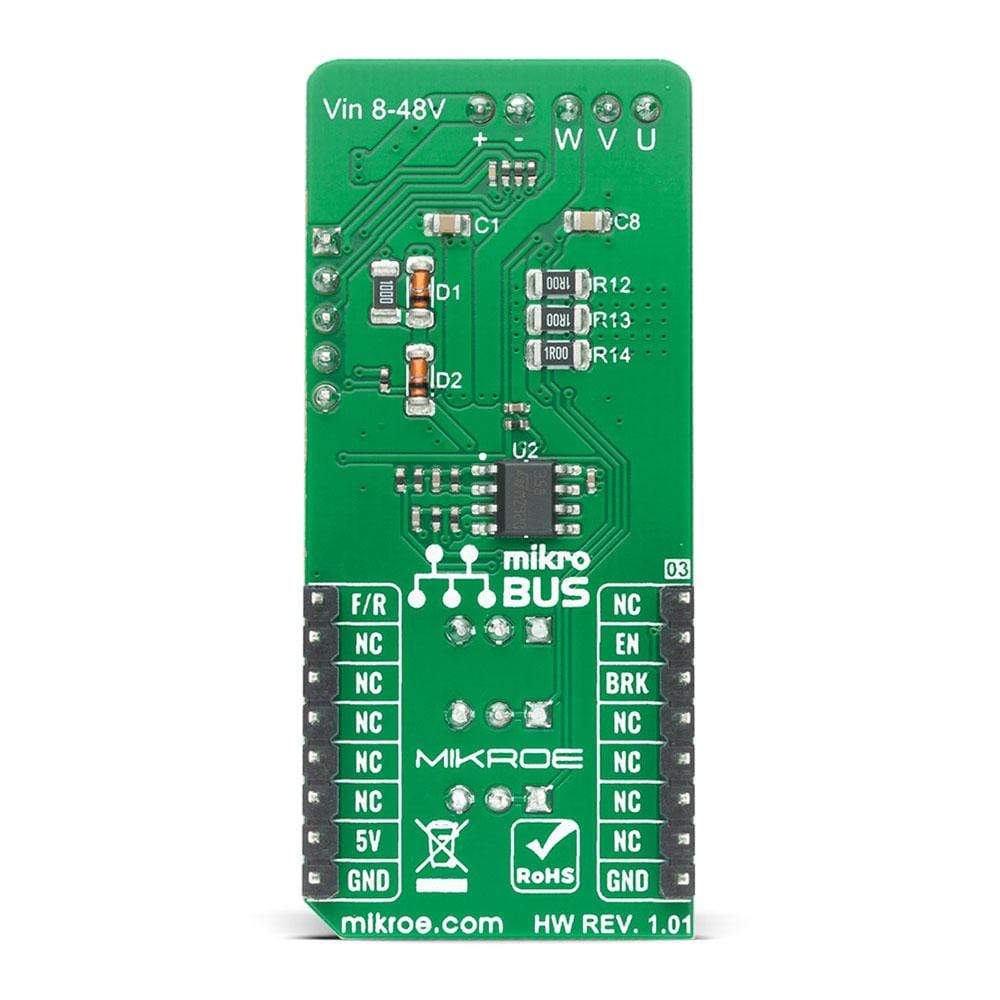
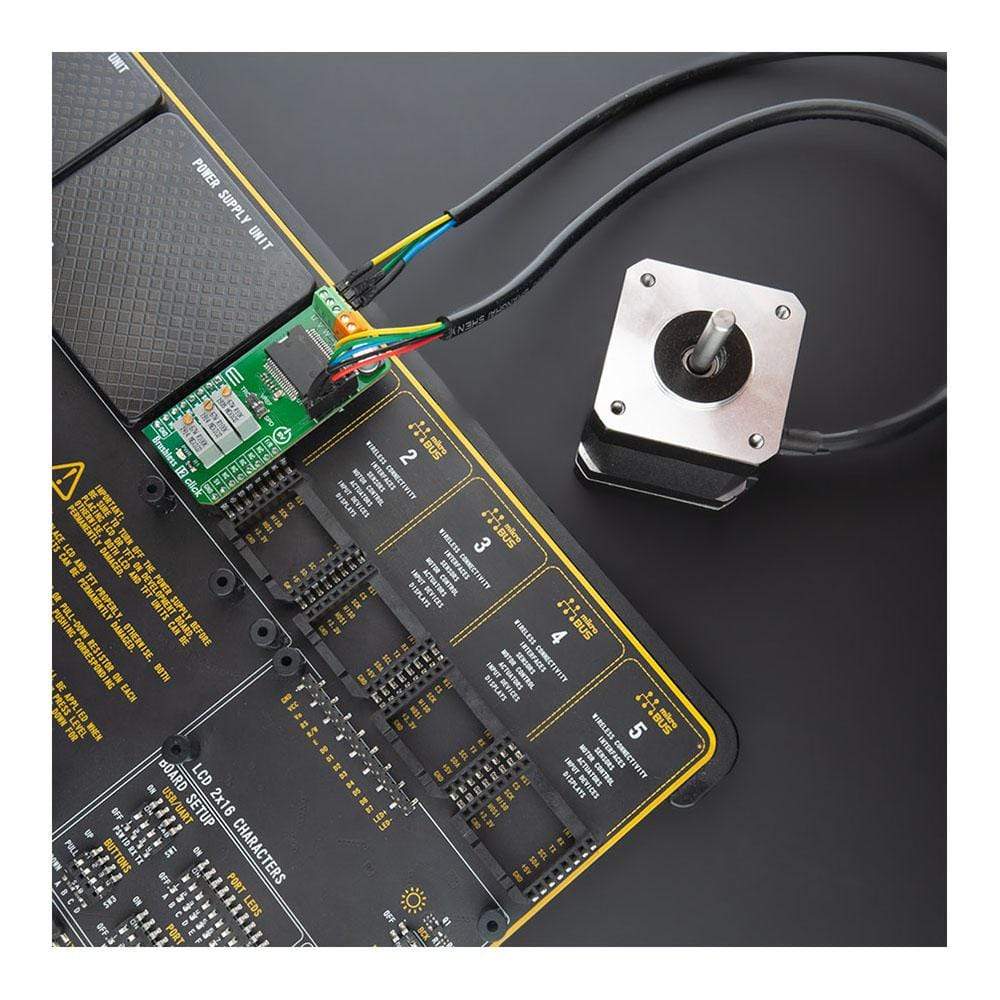
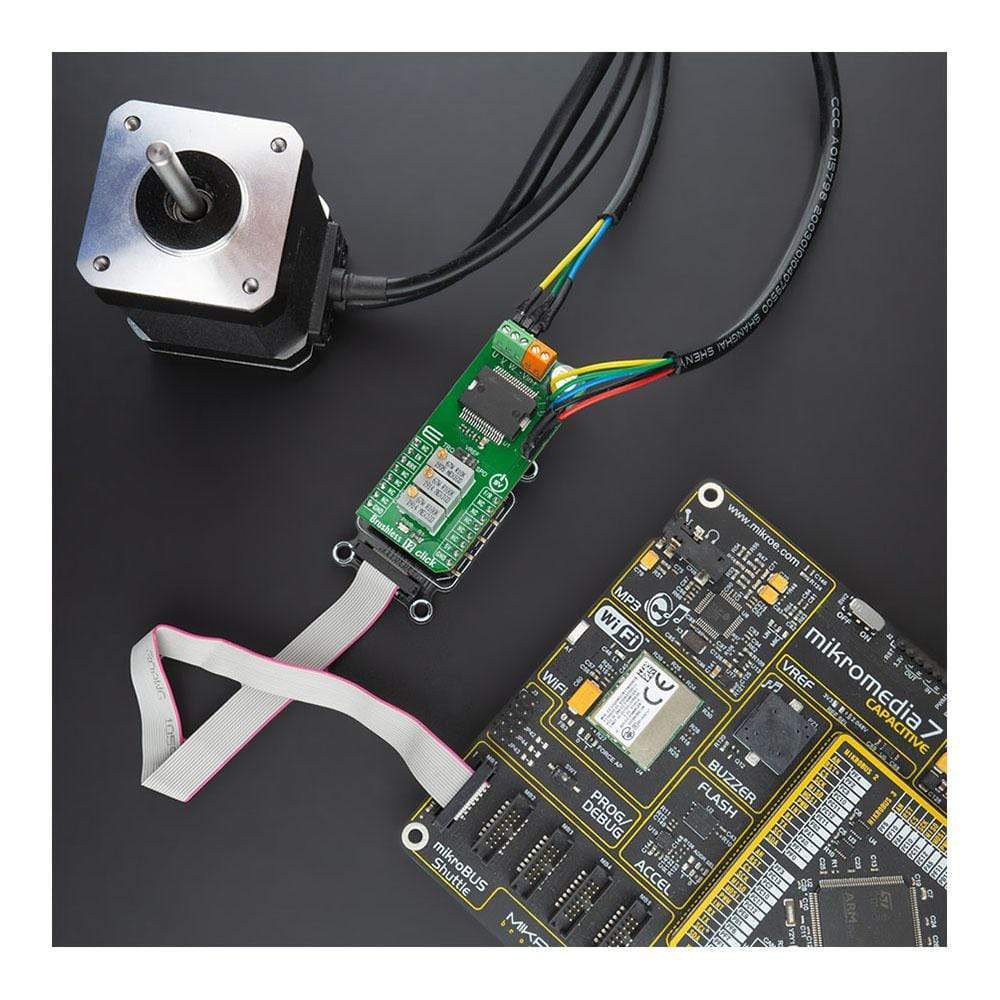
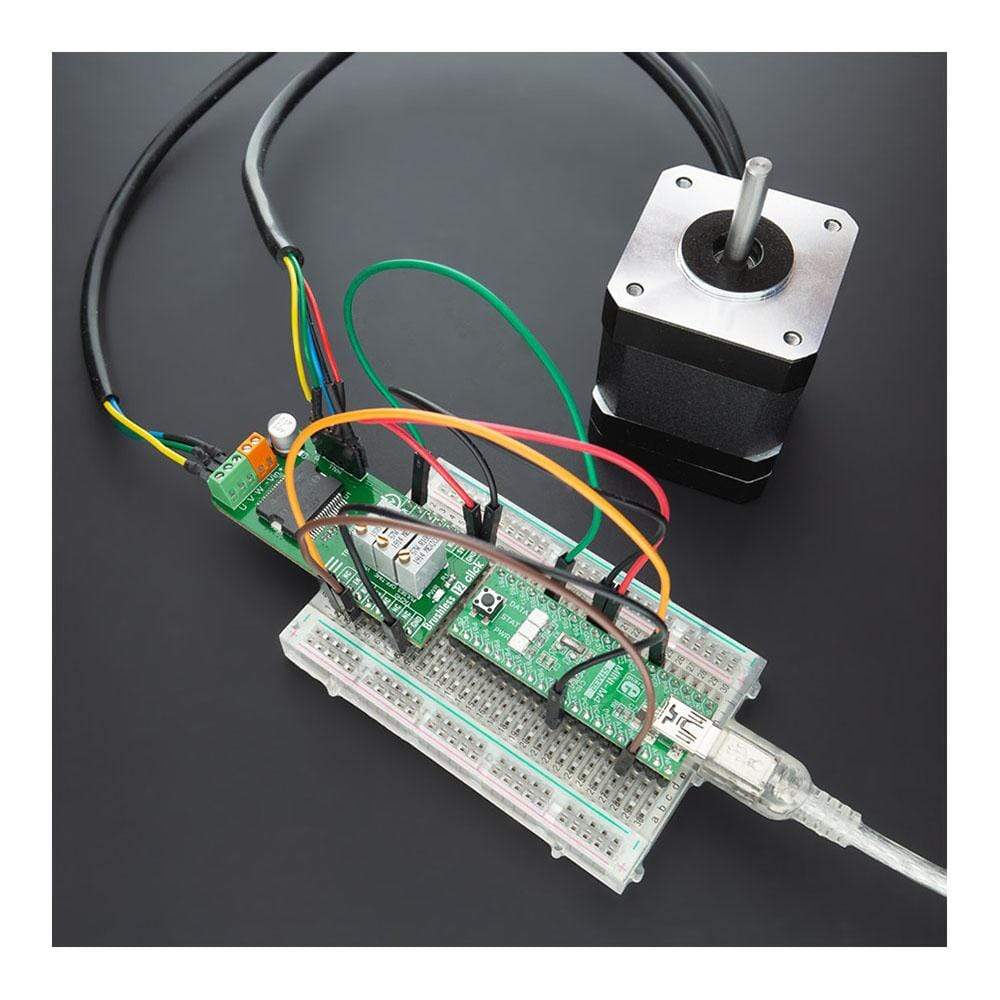
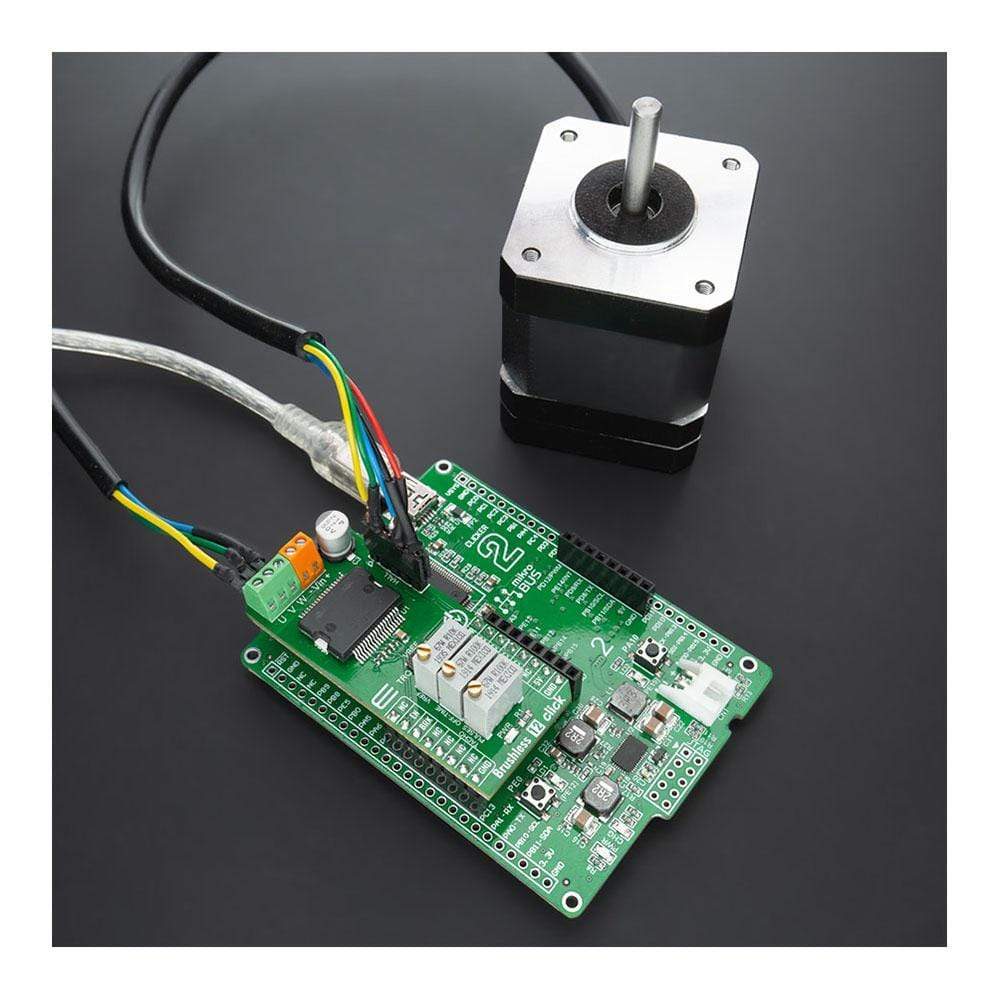
Overview
The Brushless 12 Click Board™ is a compact add-on board that controls BLDC motors with any MCU. This board features the L6235, DMOS fully integrated 3-phase motor driver with overcurrent protection from STMicroelectronics. The L6235 combines the chip's isolated DMOS power transistors with CMOS and bipolar circuits. It features a non-dissipative overcurrent protection on the high-side power MOSFETs and thermal shutdown and includes all the circuitry needed to drive a 3-phase brushless DC motor. This Click Board™ makes the perfect solution for small home appliances, robotics, battery-powered systems, small cooling fans, and many more.
The Brushless 12 Click is supported by a mikroSDK-compliant library, which includes functions that simplify software development. This Click Board™ comes as a thoroughly tested product, ready to be used on a system equipped with the mikroBUS™ socket.
Downloads
Das Brushless 12 Click Board™ ist eine kompakte Zusatzplatine, die BLDC-Motoren mit jedem MCU steuert. Diese Platine verfügt über den vollständig integrierten 3-Phasen-Motortreiber L6235 DMOS mit Überstromschutz von STMicroelectronics. Der L6235 kombiniert die isolierten DMOS-Leistungstransistoren des Chips mit CMOS- und bipolaren Schaltkreisen. Er verfügt über einen nichtdissipativen Überstromschutz an den High-Side-Leistungs-MOSFETs und eine thermische Abschaltung und umfasst alle Schaltkreise, die zum Antrieb eines 3-Phasen-bürstenlosen Gleichstrommotors erforderlich sind. Dieses Click Board™ ist die perfekte Lösung für kleine Haushaltsgeräte, Roboter, batteriebetriebene Systeme, kleine Kühllüfter und vieles mehr.
Das Brushless 12 Click wird von einer mikroSDK-kompatiblen Bibliothek unterstützt, die Funktionen enthält, die die Softwareentwicklung vereinfachen. Dieses Click Board™ ist ein gründlich getestetes Produkt und kann auf einem System verwendet werden, das mit der mikroBUS™-Buchse ausgestattet ist.
| General Information | |
|---|---|
Part Number (SKU) |
MIKROE-4357
|
Manufacturer |
|
| Physical and Mechanical | |
Weight |
0.027 kg
|
| Other | |
Country of Origin |
|
HS Code Customs Tariff code
|
|
EAN |
8606027381225
|
Warranty |
|
Frequently Asked Questions
Have a Question?
Be the first to ask a question about this.

